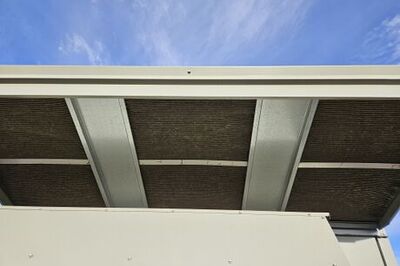
views
Fujairah (UAE): The United States sought on Wednesday to bolster its case for isolating Iran over its nuclear and regional activities by displaying limpet mine fragments it claimed came from an oil tanker damaged in an attack last week and saying the ordnance looked Iranian in origin.
Separately, a senior US official said US intelligence had confirmed that Iranian vessels had approached the damaged tanker, the Kokuka Courageous, as well as a second one, the Front Altair, prior to explosions that damaged their hulls last week.
Iran has denied involvement in explosive strikes on those two tankers in the Gulf of Oman last week and on four tankers off the United Arab Emirates on May 12, both near the Strait of Hormuz, a major conduit for global oil supplies.
But the incidents have fuelled tensions that flared with the US pullout last year from world powers' 2015 nuclear accord with Iran, followed by fresh US sanctions to stifle Tehran's vital oil trade, and a retaliatory Iranian threat this week to breach limits on its nuclear activities imposed by the deal.
Responding to Tehran's move, Washington on Monday said it would deploy about 1,000 more troops to the Middle East on top of a 1,500-troop increase announced following the May tanker attacks. The Pentagon said the new deployment will include Patriot missiles as well as manned and unmanned surveillance aircraft.
France and Germany said on Wednesday they would crank up efforts to halt any spiral towards conflict with Iran, but said time was running out and the risk of war could not be ruled out.
Iran's signal of preparedness to stockpile enriched uranium beyond the deal's limit, and refine uranium to a fissile purity higher than deemed necessary for civilian uses, prompted US President Donald Trump to warn on Tuesday he was ready to take military action to stop Tehran from developing a nuclear bomb.
The Islamic Republic denies having any such intentions.
Trump also left open whether he would support the use of force to protect Gulf oil supplies that Washington fears might be put in jeopardy by Iran in the brewing confrontation.
French President Emmanuel Macron's office said his top diplomatic adviser, Emmanuel Bonne, went to Tehran on Wednesday for talks to help ease the crisis. Bonne has been based in Iran in the past and is a Middle East expert.
Iran, where hardline foes of detente with the West have been strengthened by Trump's pressure campaign, said on Wednesday it would give European powers no more time beyond July 8 to save the nuclear deal by shielding its economy from US sanctions.
President Hassan Rouhani said Iran’s actions were the "minimum" Tehran could undertake one year after the Trump administration withdrew from the deal, but that its steps were reversible "if they return to their commitments."
Iran's Foreign Ministry said later that senior diplomats from Iran, France, Britain, Germany, Russia and China - the remaining parties to the nuclear deal - would hold the next quarterly meeting of the accord's oversight commission in Vienna, where the UN nuclear watchdog is based, on June 28.
US Displays Mine Fragments, Magnet
In the United Arab Emirates port of Fujairah on Wednesday, the US Navy exhibited pieces of limpet mines and a magnet it said its personnel extracted from one of the two oil tankers attacked in the Gulf of Oman last week.
The US military earlier released images it said showed Iranian Revolutionary Guards (IRGC) removing an unexploded mine from the Japanese-owned tanker Kokuka Courageous, which was hit by blasts along with the Norwegian-owned Front Altair on June 13.
"The limpet mine that was used in the attack is distinguishable and also strikingly bearing a resemblance to Iranian mines that have already been publicly displayed in Iranian military parades," Sean Kido, commanding officer of an explosive ordnance dive and salvage task group in the US Naval Forces Central Command (NAVCENT), told reporters.
Small fragments said to have been removed from the Kokuka Courageous were on display alongside a magnet purportedly left by the Revolutionary Guard squad allegedly captured on video.
The Japanese company that owns the Kokuka Courageous had said its ship was damaged by two "flying objects," but NAVCENT dismissed this account.
Kido also said NAVCENT had collected biometric information including fingerprints from the ship's hull that would help in crafting a criminal case against the assailants.
Separately, the US special representative for Iran, Brian Hook, told US lawmakers that "our intelligence confirms that Iranian vessels operating in and around the Strait of Hormuz on June 12th and 13th approached both the Front Altair and the Kokuka Courageous before each vessel suffered explosions."
"We assess this activity is consistent with an Iranian operation to attach limpet mines to the vessels," he added, saying that "a senior IRGC official confirmed that personnel – IRGC personnel – had completed two actions."
He gave no information on which Iranian official he was quoting, when they spoke or why the "two actions" referred to the tanker attacks.
Rocket Hits Western Oil Site in Iraq
In another incident likely to fan tensions, a rocket crashed onto a site in southern Iraq used by foreign oil companies on Wednesday, including US energy giant ExxonMobil, wounding three people.
There was no immediate claim of responsibility for the attack near the southern Iraqi city of Basra - the fourth time in a week rockets have landed near US installations. There were no casualties or major damage in the earlier incidents.
An Iraqi security source said it appeared that Iran-backed groups in southern Iraq were behind Wednesday's Basra incident.
Iranian officials have made no comment about the attack but have denied all other allegations that Tehran has targeted energy tankers and facilities in the region.















Comments
0 comment